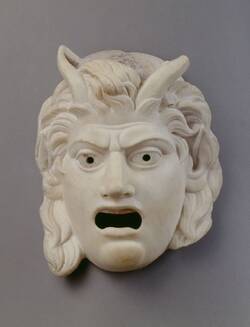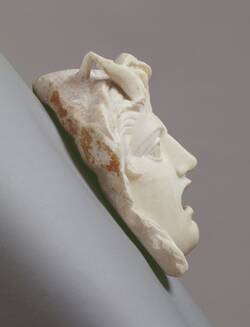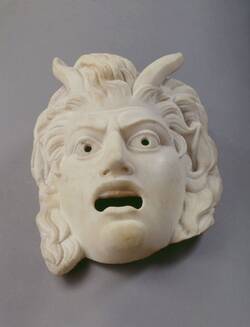This almost perfectly preserved mask is, along with the second Dresden mask, among the best quality productions of this genre. Marble masks, some of which were of colossal proportions, were used during the Roman imperial period to decorate theatres and villas. To judge by the animal ears and goat horns, this mask represented a satyr, one of the most important figures in Greek theatre, and was probably part of the elaborate decoration of a property in Pompeii.
Further Media
- Location & Dating
- 40-70 CE
- Material & Technique
- White marble with yellowish clay
- Dimenions
- H: 28,5 cm, B: 23,5 cm, T: 13,5 cm Gewicht: 4,9 kg Äußere Augenwinkel: 9,8 cm
- Museum
- Skulpturensammlung
- Inventory number
- Hm 225


